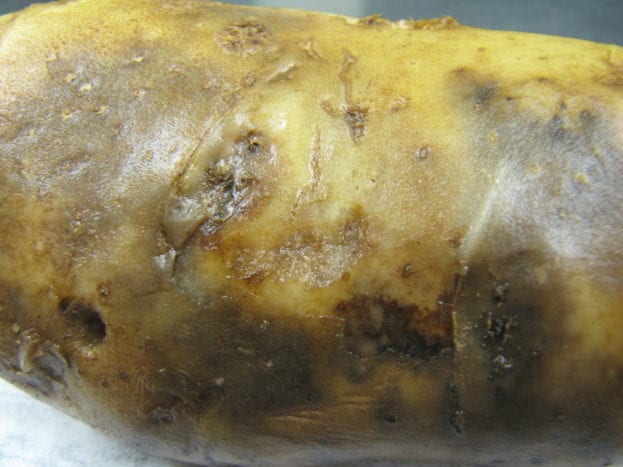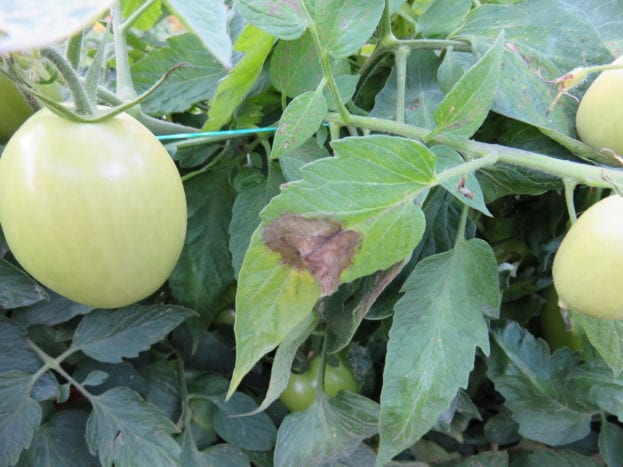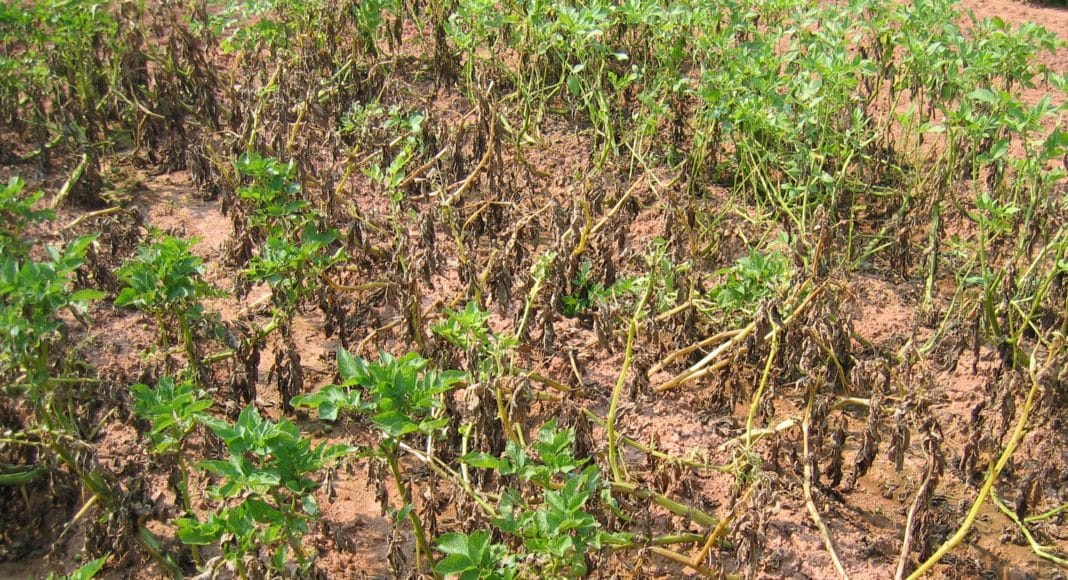Potato researchers across the country are trying to develop a strategy to fight late blight.
With a hot and dry growing season across Canada during 2020, late blight wasn’t a concern for most potato growers. But that didn’t stop the research work from happening.
“Late blight is a disease that shows up largely when the conditions are conducive for the disease, and that’s usually wet weather, and periods of a little bit cooler temperatures,” Rick Peters, research scientist at Charlottetown Research and Development Centre, says in a phone interview. “In any given year, we might see late blight more or less, in the different production regions and difference provinces, depending on the environment.”
Peters is the lead researcher on a five-year late blight research cluster project through the Canadian Potato Council with the Canadian Horticultural Council funded by the Canadian Agricultural Partnership (CAP). The project is currently in year two of five, but the research has been going on for much longer than that with Peters having studied it for years.
With the current CAP project Peters and his team of researchers from across the country are collecting late blight samples and focusing on two things — identifying the strains and what the characteristics of the strains are.
This work is “like what we do with the flu strains every year in Canada. We try to track which strains are going to be prevalent in any given year and then we sort of tailor the vaccine to try to matchup control of those strains,” Peters says. “We’re trying to do the same thing with late blight, to see what strains of the pathogen are around the country and then give information on what sort of best management tools can been used to control those strains.”
Identifying the Strains
The strains of the late blight pathogen present in Canada have changed and evolved over the years. Older strains have been replaced with newer strains.

We’re “trying to get a handle on what strains of the pathogen are present because those change and, in some years, we see new strains come in that completely replace older strains and then we need to know what some of the characteristics of these new strains are,” Peters says.
In recent years Peters team has observed the common A2 strain US8 has been replaced by a new A1 strain called US23. US8 was fairly resistant to Ridomil and would aggressively attack potatoes. With US23 it is more aggressive on tomato plants and potato tubers than potato foliage.
“We’ve really had to focus a lot on the tomato angle, not only for people that are growing tomatoes commercially but also home gardeners that like to grow tomatoes and have often been the source of disease for commercial potato growers that are nearby,” Peters explains.
In 2014, the US23 late blight strain popped up on Prince Edward Island on tomato transplants. The potato industry sprang to action informing tomato growers of the problems it could cause for potatoes with tuber rot.
“It never became a big problem in the potatoes in 2014 because it was identified early in tomatoes. Growers were extra vigilant to make sure it didn’t cross over into the potato crop,” Mary Kay Sonier, seed coordinator for the P.E.I. Potato Board, says in a phone interview.

In the years since there has been a push by the potato industry to encourage home gardeners to buy tomato varieties which are resistant to late blight strains such as US23.
Through Peters’ teams work collecting late blight samples and analyzing them they have been able to create a “road map” that identifies which late blight strains are present across the country.
By knowing which strain is more prevalent in your region “it helps you know if the strains are more destructive or more aggressive on the foliage as opposed to the tubers, or if they’re equally aggressive,” Sonier explains. “The research results also help to inform growers on which tools are most effective against the different strains.”
What the Strains Do
While knowing which strain is present is important, it’s also critical to know what the strain does and how growers can protect their crops against it.
Different late blight strains have different characteristics, Peters explains. Some strains affect tomatoes more than potatoes. Others like conditions to be a little warmer and some like cooler, wetter conditions. The late blight team is also looking at how sensitive strains are to the fungicidal controls’ farmers use.
“We’re hoping that by the end of (this cluster project), we’ll have some good options for growers to manage the disease given the changing dynamics of it,” Peters says. “Not only what chemical controls (there are), but what non-chemical controls, like the tomato varieties, can be used to really mitigate the disease.”
Late blight is one of the most significant diseases for potatoes, Peters explains. It is extremely aggressive and can quickly destroy a potato crop within in a week or two if the conditions are right.
“Once it gets going it can be devastating, and not only in the foliage,” Peters adds. “If you can control it in the foliage, you can still have problems going into storage because the spores of the pathogen can filter down through the soil and affect the tubers, and then you can get tuber rot and disease in storage.”
While most potato production areas of Canada didn’t experience late blight over the 2020 growing season, it did pop up on the west coast and Peters’ team has received samples of it to study. Each year the team receives late blight samples from different parts of the country, the hope is at the end of the five years they will have received samples from every part of the country.
Late Blight Research Team
- Rick Peters, research scientist at Charlottetown Research and Development Centre
- Khalil Al-Mughrabi, pathologist with New Brunswick Department of Agriculture, Aquaculture and Fisheries
- Fouad Daayf, professor and head of the Department of Plant Science at the University of Manitoba
- Vikram Bisht, industry development specialist – potato and horticulture crops pathology with Manitoba Agriculture
- Rishi Burlakoti, plant pathology research scientist at the Agassiz Research and Development Centre











